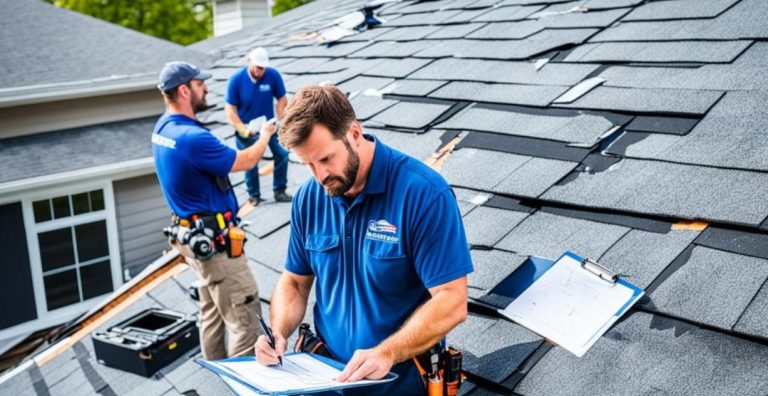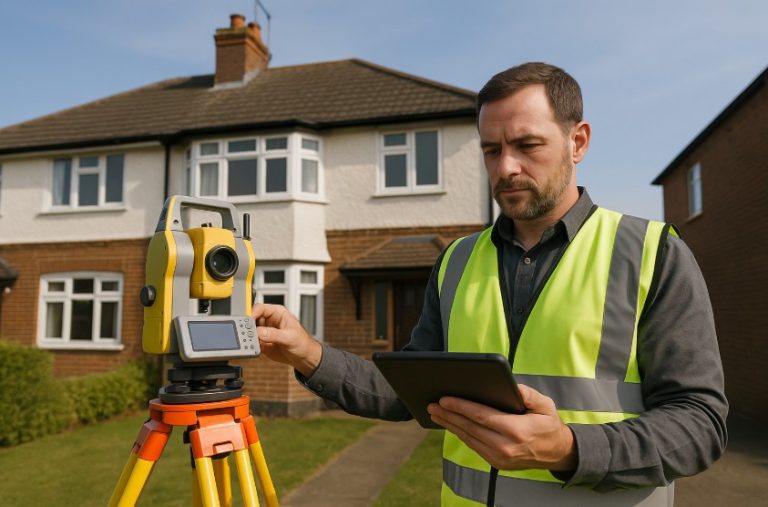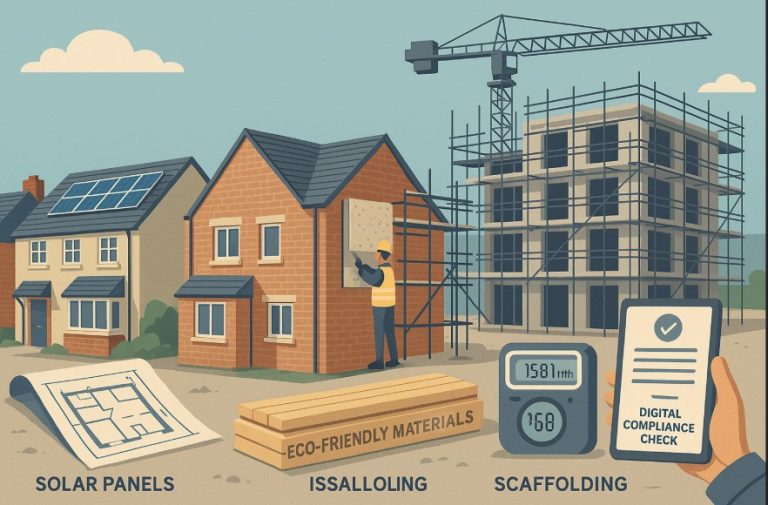Are you worried about the structural integrity of your home due to subsidence? Wondering if your buildings insurance will cover the costs of repairs? Look no further! In this blog post, we’ll explore everything you need to know about how buildings insurance can help protect your home from the damaging effects of subsidence. Stay tuned to learn more!
Understanding Subsidence and Its Impact on Properties
Subsidence is a big problem for property owners. It’s when the ground slowly moves down, causing buildings to suffer damage. It’s important for homeowners and those in the property industry to know about it.
What is Subsidence?
Subsidence means the ground sinking, either slowly or suddenly. This happens when soil under a property gets compacted or removed. It can make buildings tilt, walls crack, and floors uneven. These problems can be expensive to fix.
Common Causes of Subsidence
Several things can cause subsidence:
- Soil shrinkage: This happens when soil dries out, especially in clay-rich areas. These soils shrink and swell with changes in moisture.
- Tree roots: Big tree roots can push and harm the soil, causing subsidence. This is more likely if trees are too close to a building’s base.
- Mining activity: Old underground mining can leave holes in the soil. Over time, this can make the ground sink.
- Leaking pipes: Water leaks or sewage leaks can wash away soil, leading to subsidence.
- Poor construction: Bad or wrongly set foundations can also cause subsidence problems.
Subsidence can lead to big issues, like cracked walls and uneven floors. In extreme cases, it can even make a building unsafe. It’s key to watch for signs and act early to lessen subsidence’s effects and keep buildings safe.

The Importance of Buildings Insurance
When you own property, you face big financial duties. Having the right insurance is key to protect your investment. Buildings insurance is crucial for homeowners. It helps cover unexpected costs from property damage or destruction.
It covers things like natural disasters, burst pipes, or structural problems like subsidence. Buildings insurance gives you the money needed to fix your home. This keeps your finances stable.
Buildings insurance mainly protects your property’s structure. It covers roofs, walls, floors, and more. If something bad happens, your insurer pays for repairs or rebuilding. This lets you fix your property without huge costs.
This insurance also gives you financial security and protects your asset. It keeps your property safe from damage or destruction costs. This is very important for homeowners who have put a lot into their property. It makes sure your home insurance and property insurance needs are covered.
Choosing the right buildings insurance is key. Basic policies are good, but extra coverage for risks like subsidence gives better protection. Working with a good insurer and knowing your policy well ensures your home is safe from many threats.
| Key Benefits of Buildings Insurance | Description |
|---|---|
| Risk Protection | Covers the costs of repairing or rebuilding your home in the event of damage or destruction, such as from natural disasters, accidents, or structural issues like subsidence. |
| Financial Security | Provides peace of mind and safeguards your financial investment in your property, protecting you from potentially devastating out-of-pocket expenses. |
| Asset Protection | Helps maintain the value of your home as a valuable asset, ensuring that your property investment is safeguarded. |

Does Buildings Insurance Cover Subsidence?
Protecting your property is crucial, and knowing if your buildings insurance covers subsidence is key. Subsidence can be expensive and complex, threatening your home’s structure. It’s vital for homeowners to grasp the details of subsidence coverage to ensure they’re well-protected.
Most buildings insurance policies cover subsidence, but the level of coverage varies. They usually cover the cost of fixing structural damage from subsidence and stabilising the ground. This might include underpinning or grouting affected areas.
| Policy Inclusions | Policy Exclusions |
|---|---|
|
|
But, there are exclusions to subsidence coverage. Policies often don’t cover damage from normal settlement or expansion. They also exclude damage from faulty design, construction, or maintenance. Some insurers also don’t cover damage from tree roots, which can lead to subsidence.
Homeowners should check their buildings insurance policy for subsidence coverage details. This ensures they know what’s covered and can manage their property’s risks better.
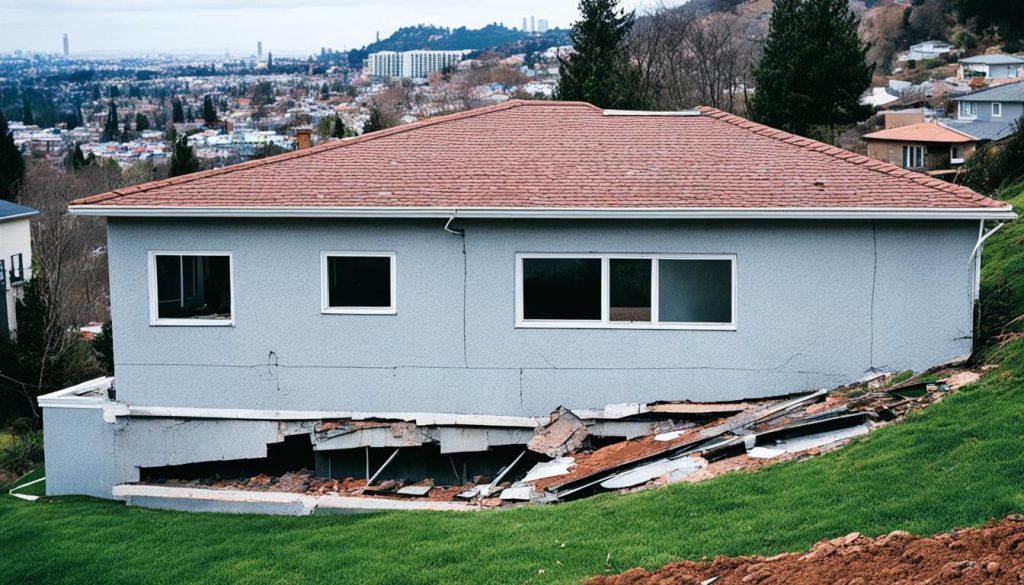
Assessing Subsidence Risk and Prevention Measures
Stopping subsidence is key for homeowners as it can cause big damage and high repair costs. Knowing the signs of subsidence and taking steps to reduce the risk helps protect your home. This keeps your investment safe and your home stable over time.
Identifying Signs of Subsidence
Spotting early signs of subsidence is vital for quick action. Look out for these common signs:
- Cracks in walls, both inside and out, that are more than a hairline and get bigger over time
- Uneven or sloping floors, especially in the middle of a room or near outside walls
- Doors and windows that stick or don’t fit right in their frames
- Gaps showing between the wall and the floor or ceiling
- Visible tilting or distortion of the building’s structure
Proactive Steps to Mitigate Subsidence Risk
Being proactive can help homeowners dodge expensive and inconvenient repairs. Here are some key steps:
- Regular Property Inspections: Having regular checks inside and outside can spot problems early. This includes a detailed look at the foundation and soil around the property.
- Soil Analysis: A soil analysis gives insights into the ground’s make-up and stability under your property. This info helps decide on the best fixes, like underpinning or improving drainage.
- Tree Management: Keeping trees and bushes in check and making sure their roots don’t harm the foundations can lower subsidence risk.
- Underpinning: Sometimes, underpinning the foundations is needed to add support and stop further subsidence.
- Ongoing Property Maintenance: Regular upkeep, including checking for cracks or other signs of trouble, can catch and fix subsidence issues early.
By tackling subsidence risks early, homeowners can safeguard their investment. This ensures their property stays stable and retains its value over the years.
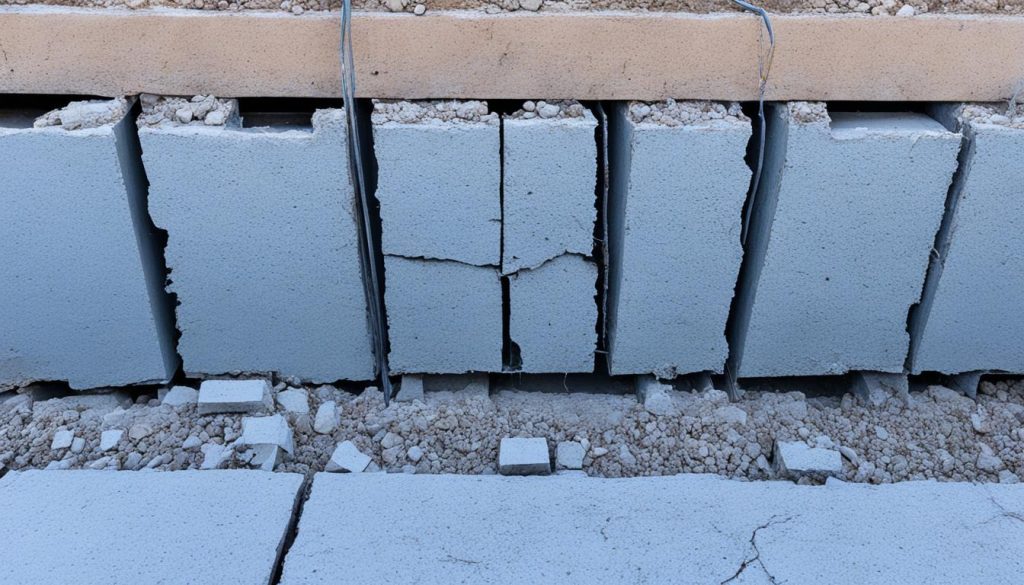
Navigating the Claims Process for Subsidence Damage
Dealing with subsidence damage to your property can be overwhelming. But, knowing the right steps can make the process easier. This guide will help you understand how to make a successful subsidence insurance claim.
Documenting the Damage
Start by documenting the subsidence damage to your property. Take clear photos and note any cracks or uneven floors. Keep a record of when these issues started. This evidence is key to show your insurer the damage.
Obtaining Expert Assessments
Your insurer will want an expert to check the damage. You might need a structural engineer or a subsidence surveyor. They will inspect and report on the damage, helping figure out why it happened and how to fix it.
Meeting Policy Requirements
Look at your insurance policy to know what’s needed for a subsidence claim. You might need to provide certain documents or follow specific rules. Knowing these can make the process smoother.
Navigating the Approval Process
After you’ve gathered your documents and expert opinions, you can make your claim. Your insurer will look at your evidence and decide what to do next. They might approve repairs, offer money, or ask for more checks. Keeping in touch with your insurer can help get a good result.
Understanding the steps in the subsidence insurance claims process can boost your chances of a quick and successful outcome. Remember, good documentation, expert advice, and following policy rules are key to getting through this process well.
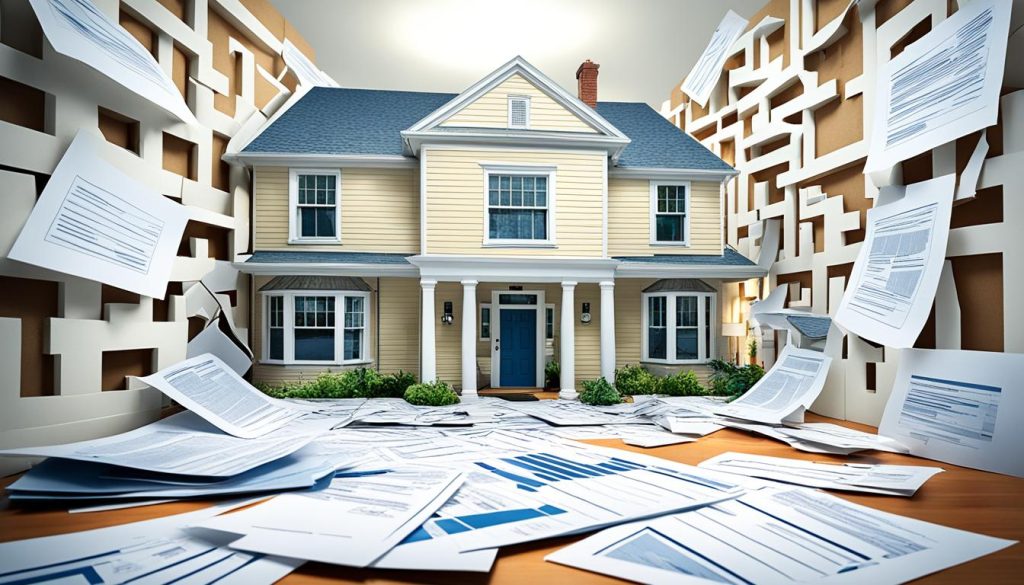
Exclusions and Limitations in Subsidence Coverage
Homeowners need to know about the exclusions and limits in buildings insurance for subsidence. It’s key to understand these details to make sure your property is well-protected against subsidence damage.
Many policies don’t cover pre-existing conditions. If your property has had subsidence or structural problems before, the insurer might not cover further damage. It’s vital to check the property and reveal any subsidence issues before getting insurance.
Gradual damage is often not covered. Insurers don’t pay for subsidence that happens slowly, like soil shifting or foundation wear. This can be a big issue as subsidence might not be noticed until it’s too late.
| Exclusion or Limitation | Description |
|---|---|
| Pre-existing conditions | Policies may exclude coverage for subsidence-related damage if the property has a history of such issues. |
| Gradual damage | Insurers often do not cover subsidence that occurs over an extended period, such as slowly shifting soil or foundation deterioration. |
| Tree roots and mining activity | Policies may exclude coverage for subsidence caused by tree roots or nearby mining activity, as these are considered external factors beyond the homeowner’s control. |
| Soil instability | Subsidence resulting from inherent soil instability, such as clay shrinkage or peat compression, may not be covered by some policies. |
Some policies don’t cover subsidence from tree roots or mining, as these are outside what homeowners can control. Also, subsidence from soil issues like clay shrinkage or peat compression might not be covered.
Dealing with subsidence coverage can be tricky. But knowing about these exclusions and limits helps homeowners make better insurance choices. It also helps them reduce the risk of subsidence damage to their properties.
Conclusion
This article has looked at how buildings insurance covers damages from subsidence. We’ve seen what subsidence is, its causes, and why protecting your property is key. It’s vital to check your insurance policy to make sure subsidence is covered. This part of home insurance can be tricky to understand.
Homeowners should watch for signs of subsidence and act to prevent it. Being proactive helps protect your property and your finances if you need to make a claim. Keeping an eye on your insurance policy and talking to your provider can make sure you’re covered for subsidence damage.
Having buildings insurance that includes subsidence coverage is crucial for protecting your property and giving you peace of mind. By understanding the risks, taking steps to prevent them, and making sure your policy fits your needs, you can handle subsidence with confidence. Your home will be well-protected.
FAQ
Why is buildings insurance important for homeowners?
Buildings insurance is key for homeowners to protect against unexpected costs. It covers things like subsidence, which could lead to big repair bills. With good coverage, homeowners can fix their property if something goes wrong.
What does buildings insurance typically cover in terms of subsidence?
Insurance for subsidence varies a lot. Some policies cover everything, while others might not cover certain things like old damage or gradual wear. Homeowners should look closely at their policy to know what’s covered.
How can homeowners assess the risk of subsidence and take preventative measures?
Spotting subsidence signs like wall cracks or uneven floors is the first step. Homeowners can lower the risk by doing regular checks, soil tests, and managing trees. These steps can help keep the property safe and might make insurance claims easier.
What is the claims process for subsidence-related damage?
To claim for subsidence damage, you’ll need to gather documents and get expert opinions. Make sure you know what your insurer wants from you. Doing this right can help get your claim sorted out quickly and fairly.


